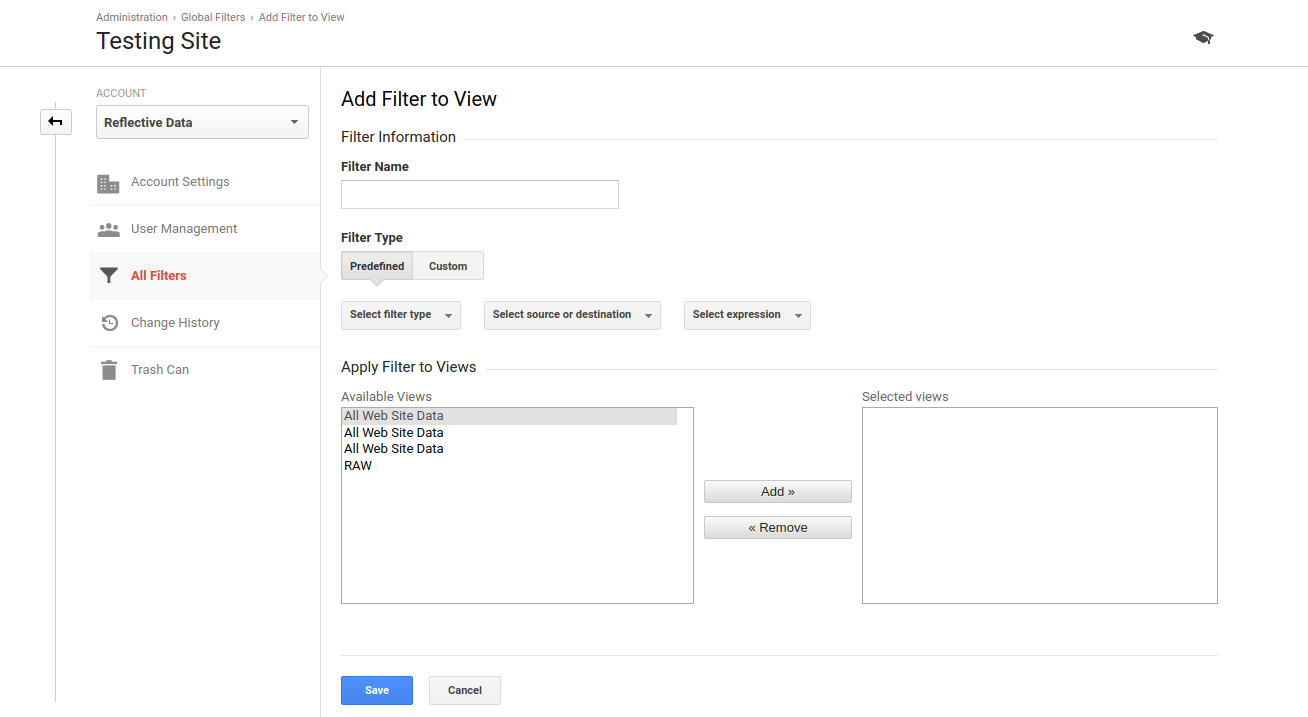A Biased View of In Which Order Does Google Analytics Filter Data
How In Which Order Does Google Analytics Filter Data can Save You Time, Stress, and Money.
Table of ContentsIn Which Order Does Google Analytics Filter Data - The FactsThe Single Strategy To Use For In Which Order Does Google Analytics Filter Data7 Simple Techniques For In Which Order Does Google Analytics Filter DataExcitement About In Which Order Does Google Analytics Filter DataIn Which Order Does Google Analytics Filter Data Things To Know Before You Get ThisSome Known Details About In Which Order Does Google Analytics Filter Data
io" is the site as well as if I go to the homepage and click some various other pages like signup web page, it reveals me in the real-time report popping-up as just how we established up in the filters. This web page is the of internet site and also you can see the sub-domain highlighted as.
Similar to the previous process, we need to develop a new filter as pointed out in the last actions - In Which Order Does Google Analytics Filter Data. in this new filter, I'm calling it as and I'm picking After that I'm keying the filter pattern as In this filter pattern, the pipeline icon () is consisted of to attach any kind of various other hostname that you intend to include along with the other hostnames
Some Ideas on In Which Order Does Google Analytics Filter Data You Should Know
This is exactly how you can go inspect your website as well as return view in real-time reports. The real-time record currently shows the modifications that you made when developing that filter. In this case, the Broken web page discusses concerning URL of the web page i. e when the Page link being repeated the same, omitting slash or any kind of minute aspects.
Currently create a brand-new filter as well as I call it as. Pick and also select the filter fields.

All about In Which Order Does Google Analytics Filter Data
The adhering to directions will certainly stroll you through the process: Produce a new Google Spreadsheet (or open up an existing one). From the food selection bar choose: Add-ons > Obtain Attachments Locate the Google Analytics Attachment from the add-ons gallery as well as pick it. From the add-on summary web page, click the "+" in the leading right corner to add this add-on to your my link spreadsheet.
Click "Approve". The add-on is now mounted. A "Google Analytics" submenu ought to currently show up in the Attachments food selection. Records can be created manually or with the help of the add-on's report development device. To make use of the device, pick "Add-ons" > "Google Analytics" > "Produce a New Record" from the menu bar.
The tool is meant to help obtain you why not check here started and provide you with the information you could not recognize off the top of your head. The remainder of the areas will require to be entered by you.
Fascination About In Which Order Does Google Analytics Filter Data
It can be a sheet in the spread sheet you're currently in, or a various spread sheet entirely (as long as you have edit access to that spread sheet). To print the outcomes to a various spreadsheet copy the spread sheet link and also paste it into the cell to the right of the "spreadsheet-url" criterion.
This opens a record organizing dialog where you can transform scheduling on and off, as well as set exactly how regularly your record will certainly run. To transform scheduling on, examine the blog box classified "Enable reports to run automatically." As soon as scheduling is enabled you can utilize the choose dropdown to regulate the time as well as regularity.
When scheduling records, make certain there is plenty of time in between when you produce the schedule and when the timetable is supposed to run. Call Summary This is the record name. It will likewise be the name of the sheet where the record data is composed.
As an example, the adhering to expression returns the last day of the previous month: =EOMONTH(TODAY(), -1) Completion date for fetching Analytics data. Demands can specify an end day formatted as YYYY-MM-DD, or as a family member day (e. g., today, yesterday, or Ndays, Ago where N is a positive integer). You can also make use of Sheets date features to specify this worth programmatically.
Metrics can be specified in a couple of formats: As an example, all of the following stand worths for the Metrics specification. ga: sessions, ga: bounces ga: sessions ga: bounces ["expression": "ga: sessions/ga: individuals", "alias": "Sessions per User", "format, Type": "FLOAT", "expression": "ga: overall, Events/ga: pageviews", "pen name": "Events per Pageview", "format, Kind": "FLOAT"] For a lot of use situations, a checklist of statistics IDs is the easiest method to specify the Metrics criterion.
A Biased View of In Which Order Does Google Analytics Filter Data
The complete list of measurements as well as metrics and their valid combinations is readily available using the Capacities as well as Metrics Explorer. Call Description A checklist of dimensions to inquire. Measurements can be specified in either styles: For instance, all of the complying with are legitimate worths for the Metrics specification. ga: resource, ga: gadget, Category ga: resource ga: device, Classification ["name": "ga: source", "name": "ga: tool, Category"] For most use situations, a list of measurement IDs is the easiest way to define the Dimensions criterion.